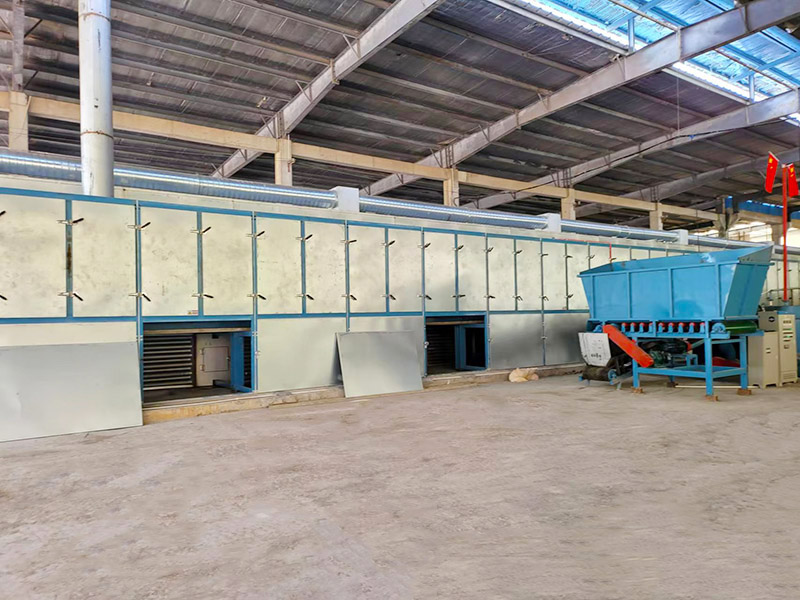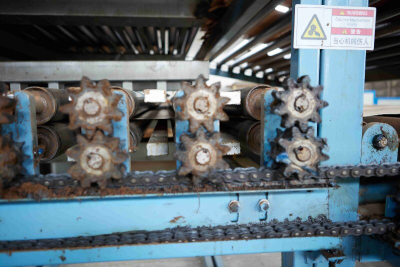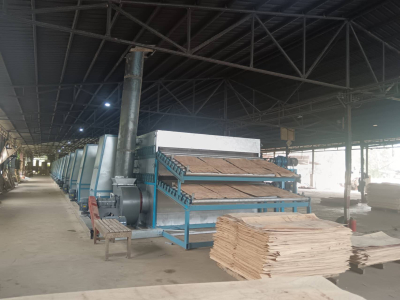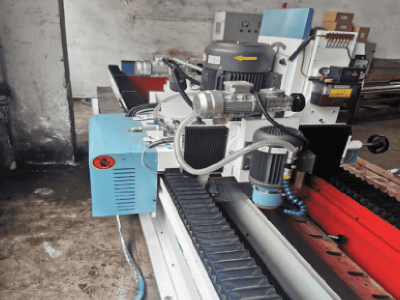Why is the veneer easy to get damp after drying?
Understanding and Addressing Moisture Reversion in Dried Veneer: A Comprehensive Technical Analysis for African Veneer Producers
For African veneer producers, achieving consistently optimal moisture content in dried veneer is a critical determinant of product quality, operational efficiency, and profitability. A frequently encountered concern—"Why is the veneer that is baked in a dryer so damp?"—merits a detailed exploration of wood science, drying dynamics, and operational best practices. This article delves into the core reasons behind moisture reversion, emphasizing the pivotal role of advanced veneer dryer technology, particularly the Shine veneer dryer, in mitigating these challenges through precision engineering and intelligent process control.
1. The Hydroscopic Nature of Wood: Fundamental Principles
Wood, as a naturally hygroscopic material, perpetually interacts with its environment by exchanging moisture with the surrounding air. This inherent characteristic means that even after undergoing intensive drying in a veneer drying system, wood remains dynamically responsive to atmospheric conditions.
1.1 Equilibrium Moisture Content (EMC)
The concept of Equilibrium Moisture Content (EMC) is central to understanding post-drying moisture fluctuations. EMC refers to the point at which wood neither gains nor loses moisture when exposed to specific temperature and humidity conditions. For instance:
In high-humidity environments (e.g., coastal regions of West Africa), wood may attain an EMC of 15–18%.
In arid climates (e.g., parts of East Africa), EMC may drop to 6–8%.
If dried veneer is stored in a setting where ambient humidity exceeds the EMC level achieved during drying, the wood will inevitably absorb moisture from the air—a phenomenon termed moisture reversion or regain. This is not a failure of the veneer dryer but a natural behavior of wood. However, the initial moisture content achieved post-drying is critical: the closer it is to the target EMC, the lower the risk of significant reversion.
2. Incomplete Drying: Technical Limitations and Process Gaps
The second major factor contributing to dampness in dried veneer is incomplete drying or suboptimal handling post-production. This can stem from several operational and technical shortcomings.
2.1 Inadequate Drying Parameters
Not all veneer drying systems are created equal. Inefficient dryers may apply inconsistent heat, uneven airflow, or insufficient drying time, resulting in a core-shell moisture gradient where the surface seems dry but the inner layers retain moisture. Over time, this internal moisture migrates to the surface, causing the entire sheet to feel damp. Key issues include:
Inaccurate Temperature Control: Under-heating fails to vaporize bound water within cell walls.
Poor Airflow Design: Uneven circulation leaves "dead zones" where moisture accumulates.
Insufficient Dwell Time: Rapid drying cycles prioritize speed over completeness.
2.2 The Role of Modern Veneer Dryer Technology
Advanced systems like the Shine veneer dryer integrate multi-zone temperature regulation, AI-driven humidity sensors, and automated conveyor speed adjustments to ensure uniform drying across all veneer layers. These systems continuously monitor moisture levels in real-time, automatically extending drying cycles if predefined thresholds are not met. This eliminates guesswork and prevents incomplete drying.
3. Storage Conditions: The Overlooked Critical Factor
Even perfectly dried veneer can revert if storage conditions are inappropriate. Post-drying handling is as important as the drying process itself.
3.1 Environmental Management
Post-drying, veneer should be stored in a climate-controlled environment where temperature and humidity are maintained at levels matching the target EMC. For example:
Ideal storage humidity: 45–55% RH.
Ideal temperature: 20–30°C.
In many African regions, high ambient humidity necessitates dehumidifiers or sealed storage spaces. Simply stacking dried veneer in an open shed exposes it to nocturnal humidity spikes, monsoon rains, or seasonal weather changes.
3.2 Packaging and Stacking Methods
Improper stacking can trap moisture between layers. Best practices include:
Using spacers between veneer sheets to promote airflow.
Wrapping stacks in moisture-barrier films (e.g., polyethylene-coated packaging).
Avoid direct contact with concrete floors, which often emit moisture.
4. How Shine Veneer Dryer Systems Mitigate Moisture Reversion
The Shine veneer dryer is engineered to address the above challenges through a combination of technological innovation and process integration.
4.1 Precision Drying with Real-Time Monitoring
Shine dryers employ:
Microwave and RF Sensors: Detect core moisture levels without surface contact.
Multi-Stage Drying Zones: Gradually reduce moisture without causing case-hardening.
Closed-Loop Heat Recovery: Recirculate hot air to maintain energy efficiency and temperature stability.
4.2 Post-Drying Moisture Stabilization
Some advanced Shine veneer dryer models include a conditioning zone where dried veneer is briefly exposed to controlled humidity before cooling. This allows the wood to acclimate to typical storage conditions, reducing the gradient that drives moisture reversion.
4.3 Integrated Solutions for African Conditions
Understanding the diverse climates across Africa, Shine offers:
Biomass-Compatible Heaters: Utilize local agricultural waste as fuel, reducing costs.
Hybrid Heating Options: Solar-assisted systems for daylight operation cut electricity use.
Remote Monitoring: IoT-enabled dryers allow operators to track performance via mobile devices and receive alerts if parameters deviate.
5. Strategic Recommendations for African Veneer Producers
To minimize moisture reversion and enhance product quality:
Invest in Modern Veneer Drying Technology
Choose dryers with real-time moisture monitoring and automated adjustment capabilities.
Ensure adequate capacity (e.g., 10–20% oversize) to avoid overloading.
Implement Strict Storage Protocols
Build insulated warehouses with dehumidification systems.
Train staff on proper stacking, wrapping, and floor isolation techniques.
Conduct Regular Audits
Use handheld moisture meters to spot-check dried veneer pre-storage.
Log environmental data (temperature, humidity) to identify risk periods.
Partner with Knowledgeable Suppliers
Work with veneer dryer manufacturers who understand African operational challenges and can provide localized support.
Conclusion: A Holistic Approach to Veneer Drying
The question of "why dried veneer becomes damp" cannot be answered by looking at the dryer alone. It requires a holistic view of wood science, technology, and logistics. By investing in advanced veneer drying systems like the Shine veneer dryer and coupling them with disciplined storage practices, African veneer producers can significantly reduce moisture-related losses, enhance product consistency, and strengthen their competitiveness in global markets.
Shine Machinery remains committed to supporting African clients with cutting-edge drying solutions and tailored technical guidance—because superior drying shouldn’t end at the dryer’s exit door.







